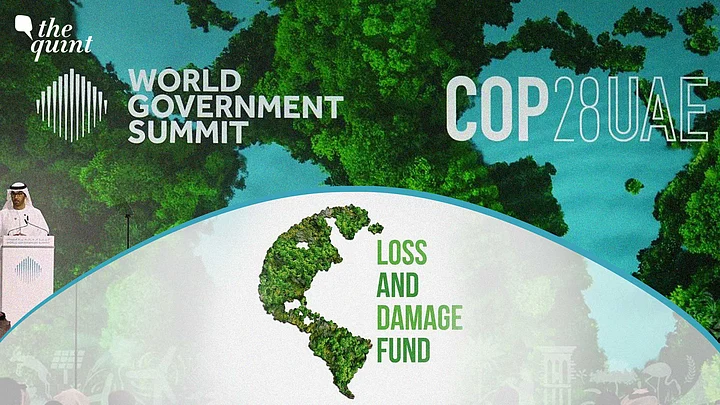The 28th Conference of Parties (COP28) to the United Nations Framework Convention on Climate Change, started on a positive note with the activation of the Loss and Damage Fund (LDF) with an initial commitment of a little over USD 400 million. While this is welcome, it will by no means meet the growing needs of communities around the world that are facing increasingly intense and frequent climate impacts.
The nature of impacts communities face too has changed. More than the physical damage, it is the distress due to the breakdown of basic services, livelihoods, and environmental degradation that requires attention.
Currently, the assistance offered by the public systems to compensate for the loss to the most affected is at best around 30 percent of what they have lost. Often it is far less as most of the disasters that are ‘under the radar’ don’t even get counted.
That immediately puts an affected person and their family in a downward spiral of aggravated vulnerability – sometimes pushed to further impoverishment in a very short span of time. As per SEEDS' (Sustainable Environment and Ecological Development Society) estimates, for a family whose annual income is in the range of Rs. 2 lakhs, it may take as much as many as 19 years – almost a generation to recover from such loss.
Ripple Effects Of Climate Change
With several scientific studies establishing that global annual temperatures are rising at twice the rate since 1981 and that the number of climate-induced disasters is doubling every decade, climatic events will lead to ripple effects across lives and livelihoods.
India is among the 10 most climate-induced disaster-affected areas in the world. This year, we are already witnessing a disaster event almost on a daily basis. Two years ago, the city of Chennai was reeling under drought and is currently experiencing its highest rainfall in 47 years.
Given India’s diverse geography, it is becoming increasingly evident that across the country, communities will suffer from various adverse impacts of climate change – droughts, cyclones, hailstorms, water stress, Glacial Lake Outburst Floods (GLOF), forest fires, coastal erosion, or landslides. Invisible disasters like extreme heat conditions are particularly impacting people's health, family expenses, and productivity in the form of mounting medical bills, and loss of working days.
Our current approaches to responding to such impacts have to be urgently revisited. In the chaos that follows a disaster, marginalised communities are often excluded from assistance. When there is duplication of efforts, relief is not well coordinated between governments, civil society, and private efforts.
Data on Loss and Damage Needs To Be Tracked Closely
Very often, non-state contributions for relief are not tracked to ensure inclusivity, and disaster relief efforts are not aligned with resilience-building efforts especially prevention and preparedness in communities. Among others, one principal root cause for the lack of effectiveness is the need for community-level data on damage and loss.
Post-disaster assessments are often delayed, are time-consuming, and provide insufficient insights on cumulative losses. While direct impacts of disaster on lives, housing, and livelihoods are visible and often the basis for compensation, there are indirect socio-economic impacts as well as invisible socio-emotional impacts – which are largely overlooked.
Indirect socio-economic impacts would include disruption in education services, or parents not being able to pay for their children’s education, resulting in increased dropouts and absenteeism. Other secondary impacts could be lack of access to primary healthcare services, development of communicable (such as water-borne diseases) diseases, increased food insecurity, logistical challenges to access markets, and loss of documentation in the disaster leading to lack of access to government compensation and services.
A growing area of concern has been mental health concerns as the trauma of repeated disasters and the inability to cope continues to grow.
Solutions Viable for Long Term
So where can we begin? A useful starting point would be community-driven, timely, and inclusive reporting on loss and damage of climate impacts.
We need an approach that can work at scale and embrace the diversity of challenges that India faces, without compromising the agency of people.
Can technology be the answer? Can technology provide solutions where communities are part of assessing real-time damage themselves? A robust self-reporting system can be the building block, that can orchestrate a better approach that, with coordinated participation of the government, civil society, and private efforts, not just caters to the short-term immediate relief needs but also aims to build resilience of communities.
(Dr Manu Gupta is the Co-founder of SEEDS and a recipient of the United Nations Sasakawa Award for Disaster Risk Reduction 2022 and Subhash Chandra Bose Aapda Prabandhan Award 2021 by the Government of India. This is an opinion piece and the views expressed above are the author’s own. The Quint neither endorses nor is responsible for them.)
